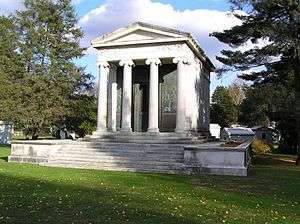Francis Patrick Garvan

Francis Patrick Garvan (born June 13, 1875 in East Hartford, Connecticut – November 7, 1937) was an American lawyer and long-time president of the Chemical Foundation. The American Chemical Society awarded him its highest honor, the Priestley Medal, in 1929. Garvan established what is now known as the American Chemical Society's Francis P. Garvan-John M. Olin Medal to "recognize distinguished service to chemistry by women chemists" in 1936.
Career
Garvan graduated from Yale University in 1897 (A.B.) and from New York Law School in 1899 (LL.B.). He had a distinguished career as a lawyer, and served as: an Assistant District Attorney in New York City (from 1900 to 1910); Alien Property Custodian (the official who seized and managed enemy property in the United States during and after World War I including, notably, patents and other assets of the German dye and chemical industries); a director of the New York office of the U.S. Bureau of Investigation; an Assistant United States Attorney General; and Dean of the Fordham University School of Law (from 1919 to 1923). He was also a trustee of The Catholic University of America and was himself a Roman Catholic.[1]
In 1919, President Woodrow Wilson appointed Garvan President of the Chemical Foundation, a post he held until his death. At the time, the Chemical Foundations income was US$8.6 million; however, no dividends were paid to any shareholder and the chief officers received no salaries for their work.
Under Garvan's leadership, the Chemical Foundation supported the first nine years of the Journal of Chemical Education, as well as the microbiology journal Stain Technology (which came about from an idea of Garvan's). In the early 1920s, the Chemical Foundation provided over $100,000 to the Commission on the Standardization of Biological Stains, although some thought much of these funds came directly from Garvan himself. Garvan and the Chemical Foundation played a role in the founding of the American Institute of Physics, and, in collaboration with Charles Herty, the founding of the National Institutes of Health.
With financial support of the Chemical Foundation Garvan acted as an active promoter of the Chemurgy-Movement. He supported in close collaboration with Henry Ford and others a farm-based production of ethanol (alcohol), which finally helped to supply synthetic rubber during World War II.
Garvan and his wife, Mabel Brady Garvan, sponsored the American Chemical Society's Prize Essay Contest for seven years in memory of their daughter. They also supported the Chemical Foundation as it gave libraries across the United States chemistry reference works. The Garvans' donations to these causes are estimated at one million dollars.
Honors and awards
In addition to the Priestley Medal (Garvan remains the only non-scientist to receive it), Garvan (jointly with his wife) was awarded in 1929 the American Institute of Chemists Gold Medal. He also received honorary degrees from Fordham, Notre Dame, and Yale Universities and Trinity College.
Private life

Garvan was the son of Patrick and Mary (Carroll) Garvan. In 1906 his sister, Genevieve Garvan, married prominent New York City businessman, Nicholas Frederic Brady. On June 9, 1910, Francis Patrick Garvan married Nicholas Brady's sister, Mabel. The couple had seven children, six of whom lived to adulthood:
- Patricia Garvan (d. 1918)
- Francis Patrick Garvan, Jr.
- Mabel Brady Garvan (Mrs. Robert Philip Noble)(d.1972)
- Flora Brady Garvan (Mrs. Francis D. Winslow 2d)
- Anthony Nicholas Brady Garvan
- Peter Dunne Garvan
- Marcia Anne Garvan (d. 2014)
Garvan died November 7, 1937. Mabel Garvan continued to be involved with the Garvan-Olin Medal for thirty years after her husband's death. In addition to the Garvans' chemical philanthropy, they donated 10,000 art objects to Yale University, today known as the Mabel Brady Garvan Collection at the Yale University Art Gallery. It is "one of the most comprehensive collections of early American arts and crafts in the nation."
Notes
References
- ↑ Catholic Action ...: A National Monthly. 1922. pp. 28, 34.
External links
- The Francis P. Garvan - John M. Olin Medal
- A Portrait of Francis P. Garvan in the National Portrait Gallery
- Includes Garvan's Who's Who in America Listing
- Charles H. Herty Biography
- Garvin Estate Ruins
- The forbidden fuel, Power alcohol in the twentieth century
- "Federal Bureau of Investigation: Directors, Then and Now". Retrieved 2010-11-07.